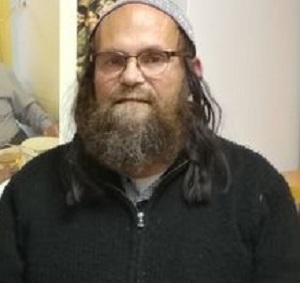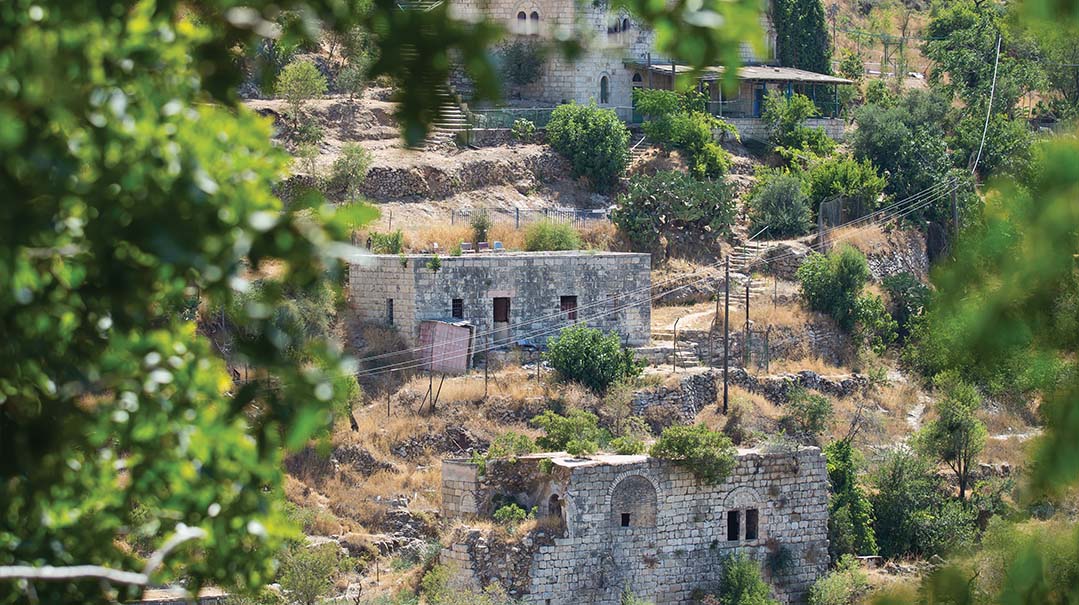Lifta’s LAST STAND

Lifta’s next generation: The end of the village they’ve always called home?

Photos: Yoav Dudkevitz
The view from Yoni Yochanan’s window is breathtaking. His home, perched upon a hill not far from the western entrance to Jerusalem, turns into a front-row seat when the sun starts to dip below the Jerusalem hills, turning the sky into an awe-inspiring display of mysterious purples, pinks, and blues.
Yet underneath the seemingly peaceful veneer of Lifta, the village where Yoni was born and still lives, a storm is brewing. The Israeli government wants the land for development. Lifta’s remaining residents want what they consider fair compensation for evacuating their homes. Confusing the issue is the legal status of the village’s 13 families. Are they “illegal squatters,” as the government claims, or are they victims of a system that denied their immigrant parents and grandparents their legal rights?
No Questions Asked
Lifta’s roots can be traced back to the times of the Tanach, when the village was called Neftoach. It was famous for its natural pool, which is still in use today. With time, Lifta became an Arab village. During Israel’s War of Independence, the village sprang into importance because of its strategic location: In order to break the Jordanian siege of Jewish Jerusalem, Jewish forces had to clear the road leading to Jerusalem of enemy activity, so the badly needed convoys carrying food and other supplies could reach the city’s besieged residents. As the Jewish troops advanced, the Arabs living in Lifta fled.
After the war, Israel Prime Minister David Ben-Gurion decided to settle Jews in the abandoned village, which, unlike today, was far away from any Jewish settlement. The Jewish Agency brought in new immigrants from Yemen — and left them there, without running water or electricity. There wasn’t even a grocery shop anywhere nearby.
In 1951, new immigrants from Kurdistan joined the Yemenite settlers. Among them were Yoni Yochanan’s parents.
“My parents were innocent Jews. When they arrived in Israel, they bowed down and kissed the Holy Land, for which they had yearned for so long. They didn’t question the government representatives. Whatever those representatives told them to do, they did. In Kurdistan my father was extremely wealthy. He had 2000 acres and a business. All this was taken away from him when he left Kurdistan. My parents came here penniless, with only the shirts on their backs. In Lifta, my father dug the stony land with his bare hands. That was how he built our home.”
Yoni’s grandfather, Rabbi Ovadia Yochanan, who was a well-known talmid chacham in his hometown in Kurdistan, became the village rabbi. He founded a beis medrash and taught the new immigrants Gemara. “To this day we all pray on Shabbat and holidays in the synagogue that my grandfather founded,” says Yoni with pride.
Yet living conditions remained harsh — and dangerous. After the establishment of the State of Israel, the village was very close to the Jordanian border and it was often shelled.
In a letter addressed to Ben-Gurion, whom the new immigrants innocently refer to as “our lord, our master, and our counselor,” the early settlers described, in biblical style, their difficulties:
“Honorable Prime Minister, see and observe what befell us. From the immigrants camp we were taken, unbeknownst to us, to a deserted Arab village. We were beguiled and misled. We were told: Go to Yerushalayim, and there you will be taken care of. We innocently believed their words. Yet they threw us to a place full of dogs, the valley of the shadow of death, barren and deserted, a place where we constantly have to climb up and then go down, a place of wild animals and enemy soldiers, right near the enemy border, without any guards or security forces, a lawless and abandoned area where we are frightened by all our enemies.”
The village was finally connected to the Jerusalem municipal water supply in 1955. Connection to the electric company’s grid occurred three years later, when then–Israel president Yitzchak Ben-Zvi and his wife Rachel Yanait Ben-Zvi visited. Deeply shocked by the horrible living conditions, the president and his wife approached every who’s who in the government and demanded that the village be immediately supplied with electricity.
Yoni still has several old newspaper articles describing the desperate situation of Lifta’s inhabitants. The articles also mention that the various government ministries totally ignored their plight and never helped them achieve normal economic living conditions. Indeed, life in the village only began to normalize after the 1967 Six Day War, when the Jordanian troops were defeated and the shelling stopped.
But Yoni’s interest in Lifta’s past isn’t academic. He only became a frequent visitor to Israeli archives after he and the other residents received a different kind of bombshell a few years ago: An order to evacuate their homes — and an accusation that the residents are all trespassers and squatters.
Oops! We could not locate your form.







